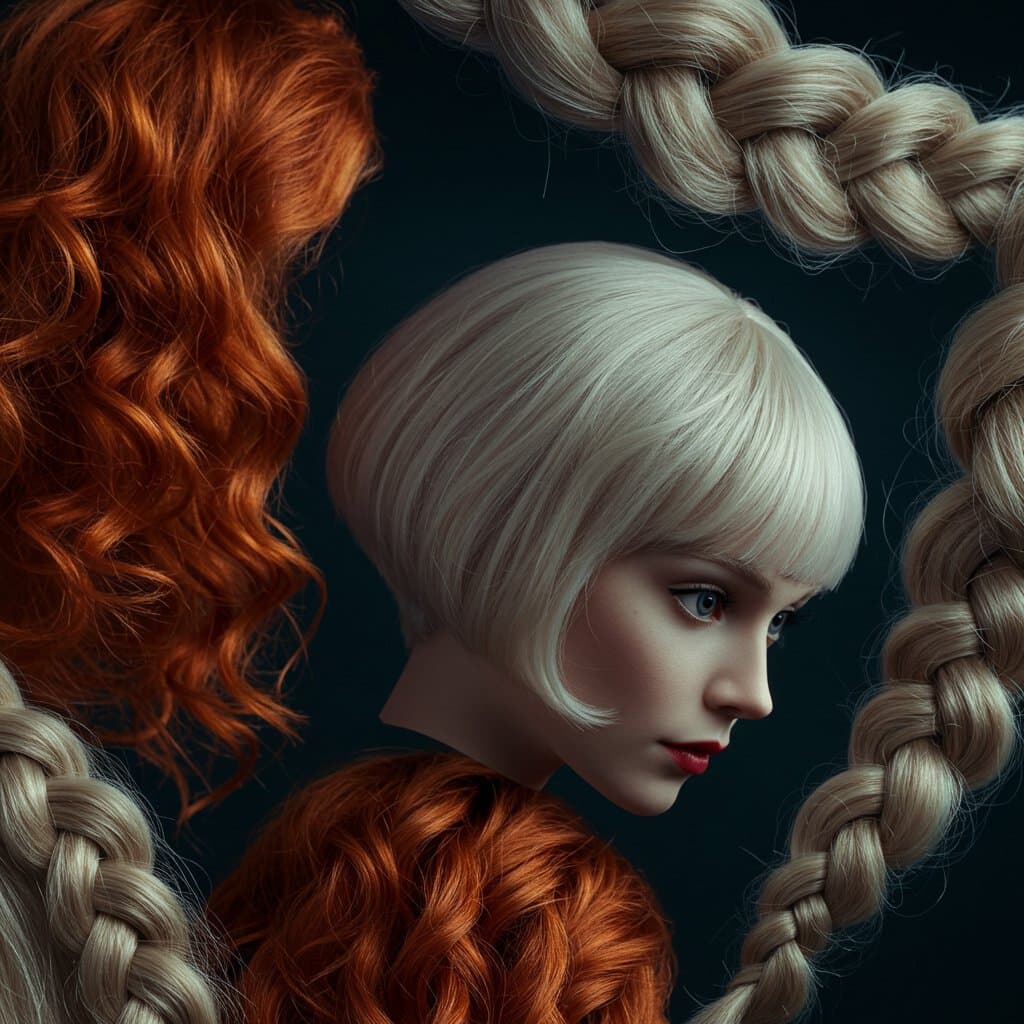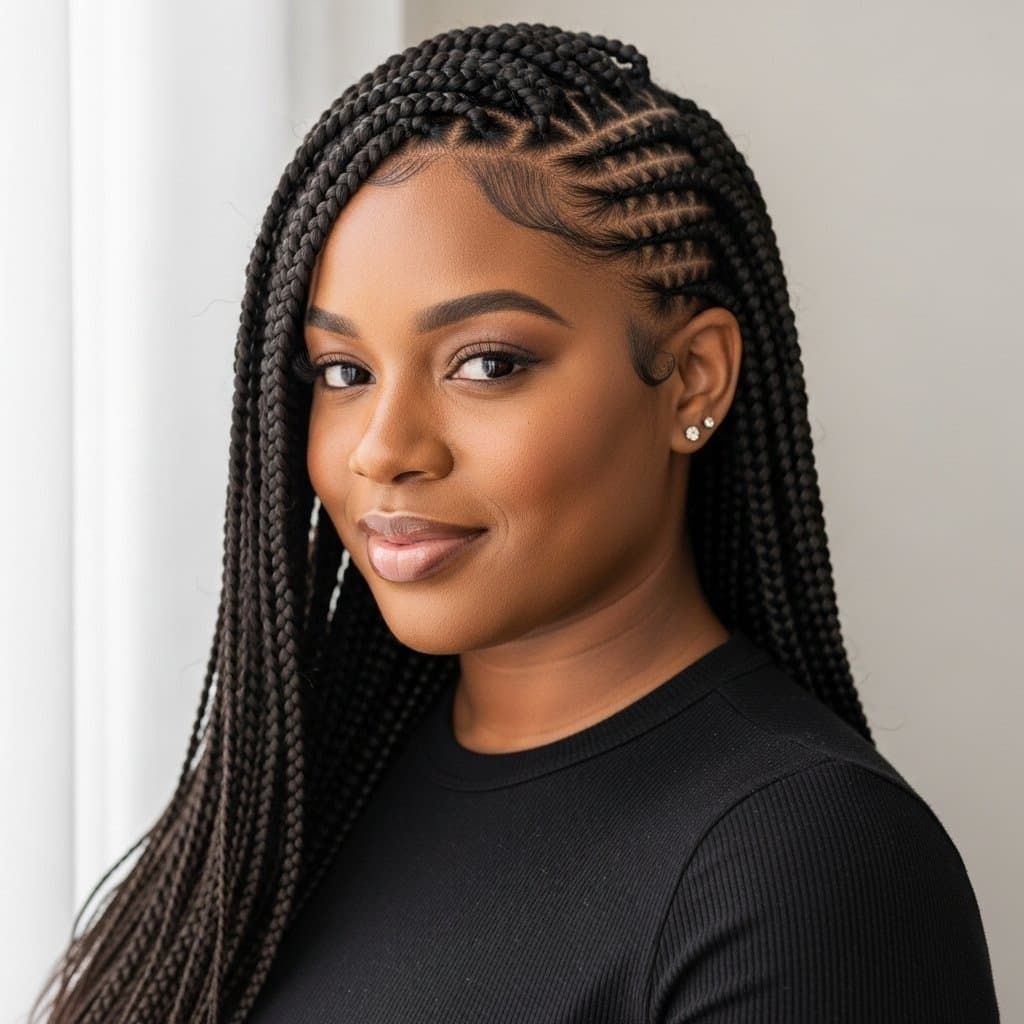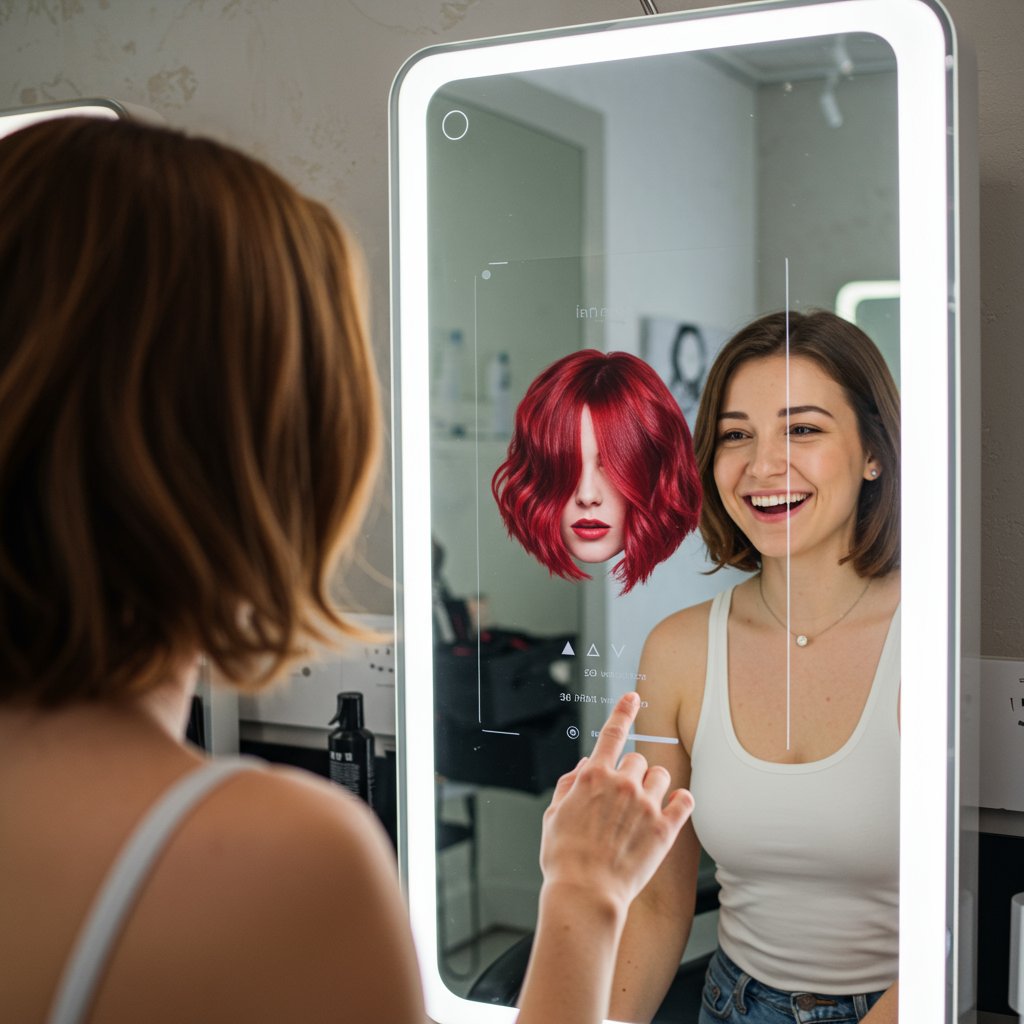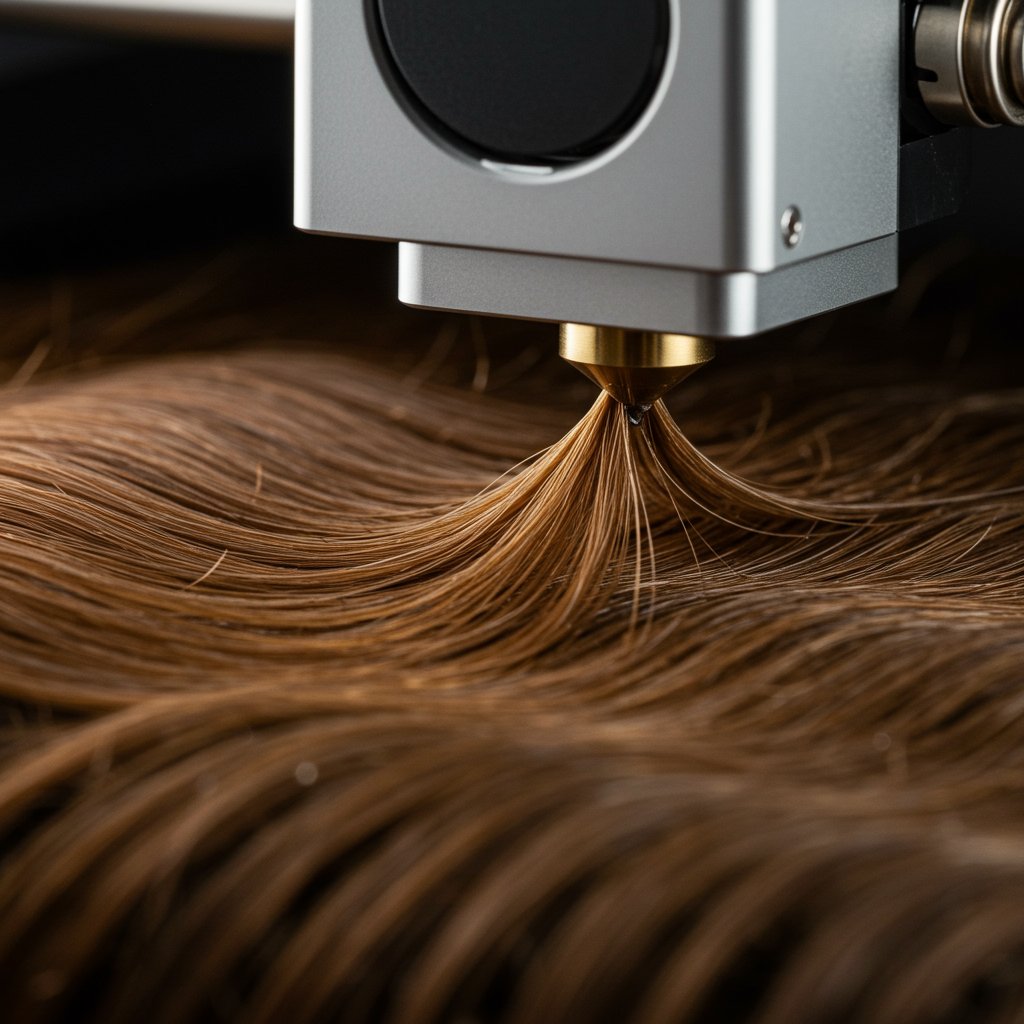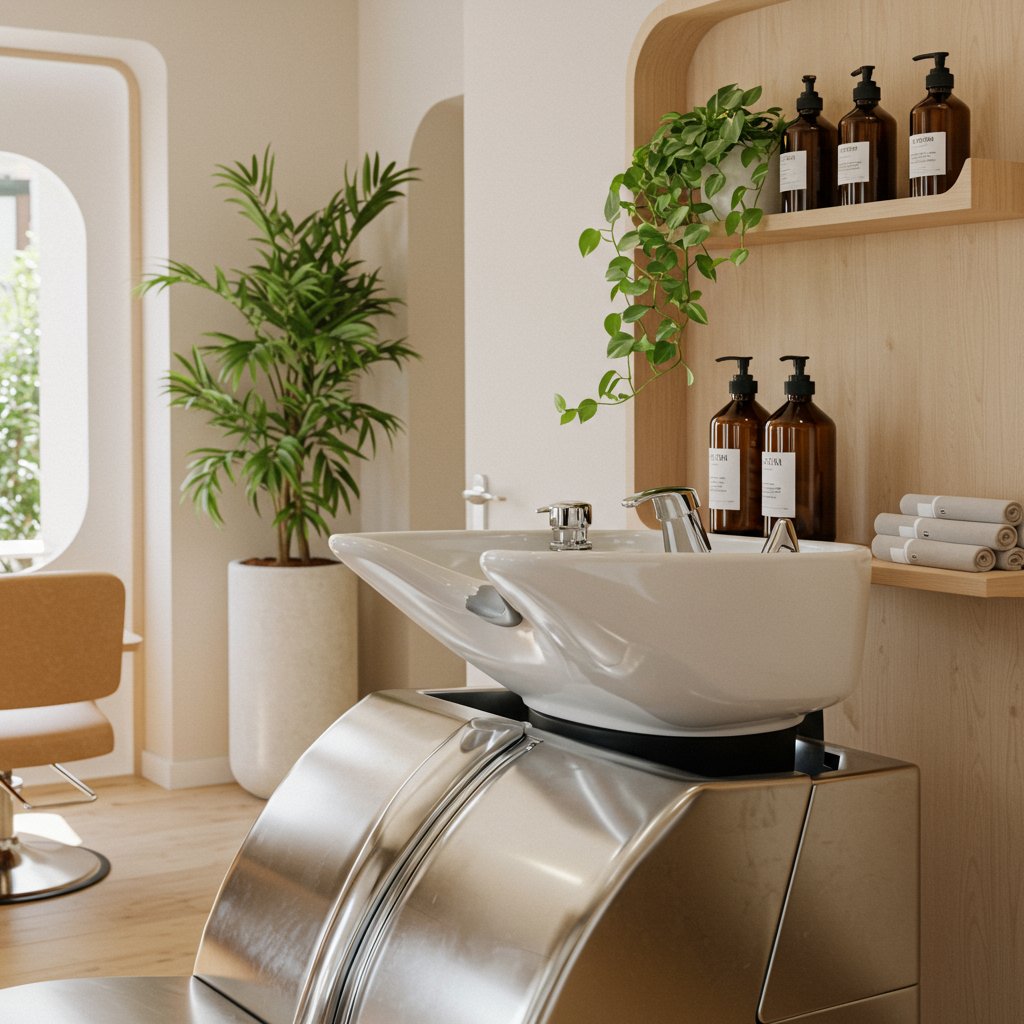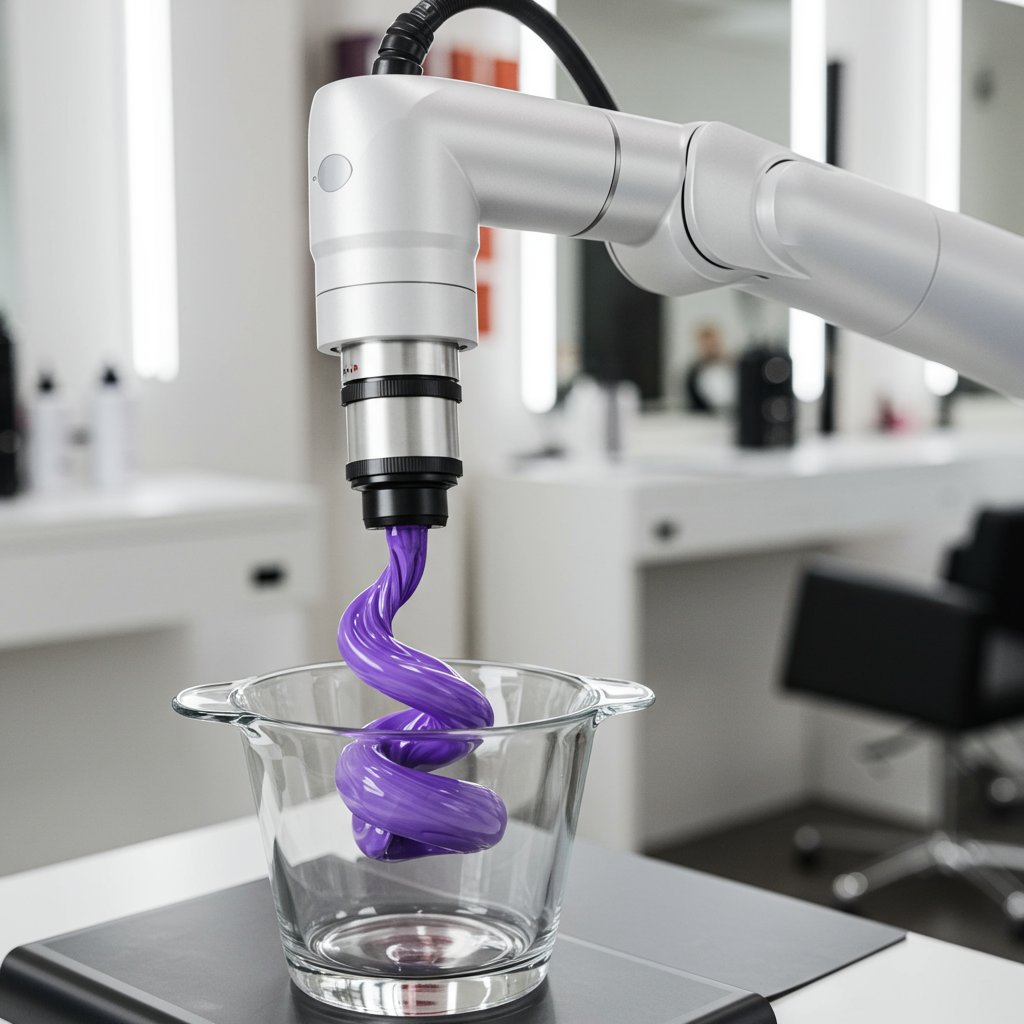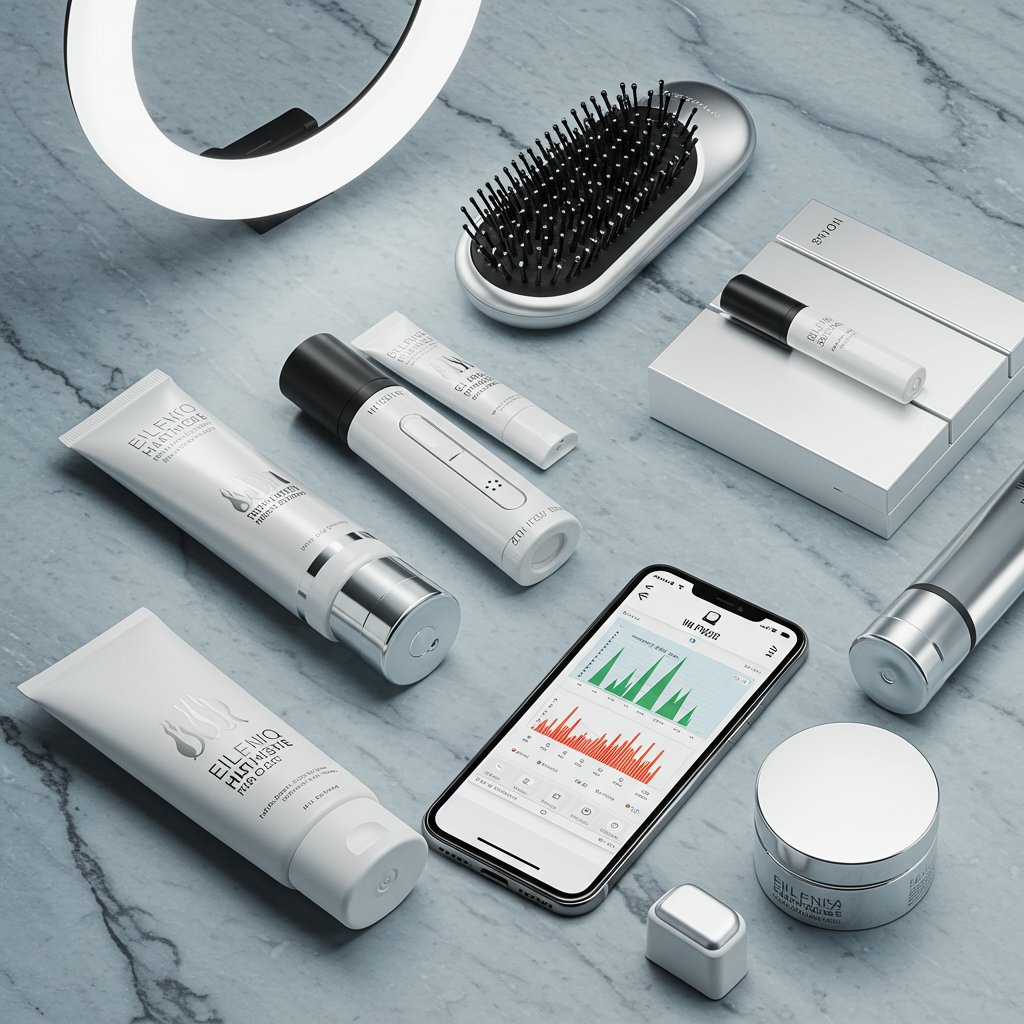The Dawn of a New Era in Hair Artistry
The world of hairstyling has always been a blend of art and science, but the scales are tipping dramatically towards a future where technology is not just a tool, but a creative partner. The gentle hum of a smart hairbrush analyzing strand density, the glow of an augmented reality mirror showcasing a bold new color before the first drop of dye is mixed—this is no longer science fiction. We stand on the precipice of a revolution, where the future of hairstyling is being sculpted by artificial intelligence, bio-fabrication, and a deep commitment to sustainability. This convergence promises a level of personalization and precision previously unimaginable, transforming the salon chair into a hub of innovation.
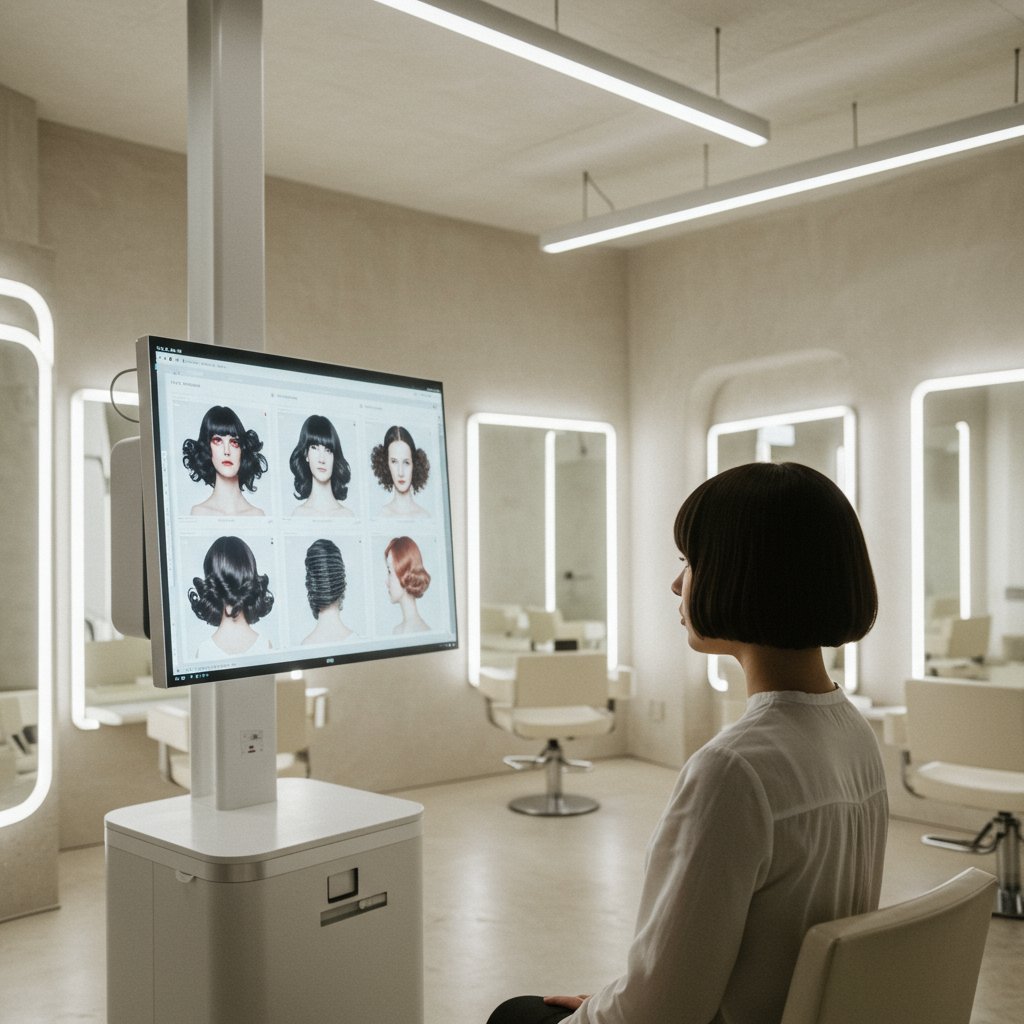
This deep dive explores the exciting technologies and trends set to redefine our relationship with our hair. From AI-driven consultations that decode your hair's unique language to 3D-printed extensions that offer seamless integration, we will journey through the innovations that empower both stylists and clients. We'll examine how augmented reality is eliminating haircut anxiety, how robotics are enhancing the luxury of the salon experience, and how sustainability is becoming a non-negotiable cornerstone of modern beauty. Prepare to look beyond the scissors and combs and envision the incredible future of hairstyling that awaits.
The AI-Powered Consultation: Hyper-Personalization Begins Here
The standard hair consultation—a brief chat about past styles and future hopes—is undergoing a radical transformation. The future of hairstyling is anchored in data, and artificial intelligence is the key to unlocking it. Advanced salons are beginning to integrate AI-powered diagnostic tools that go far beyond what the naked eye can see. Imagine a stylist using a handheld device equipped with microscopic cameras and sensors to scan your scalp and hair shafts. This isn't just a gimmick; it's a deep dive into the very biology of your hair.
Data-Driven Hair Health
These AI systems analyze a multitude of factors in real-time: scalp moisture levels, sebum production, follicle health, hair porosity, cuticle damage, and even strand density per square centimeter. The collected data is then processed by an algorithm that compares it against a vast database of hair types and conditions. The result is a comprehensive 'hair health report' that provides an objective, scientific foundation for any service. This eliminates guesswork, allowing stylists to recommend treatments, products, and routines with unparalleled accuracy. For a client, this means moving from hoping a product will work to knowing it's formulated for their specific needs.
Predictive Styling and Treatment
The power of AI extends beyond diagnostics into prediction. By analyzing your hair's current state and understanding its properties, AI can simulate how it will react to certain chemical processes, like coloring or perms. It can predict the rate of color fade based on your hair's porosity or recommend the precise amount of protein treatment needed to restore elasticity without causing brittleness. This predictive capability empowers stylists to create ambitious looks with greater confidence and safety, ensuring the integrity of the hair is the top priority. The AI-powered consultation is about building a long-term, personalized haircare strategy, not just a one-off appointment.
Smart Tools and Augmented Reality: Visualize Before You Commit
One of the biggest sources of client anxiety is the uncertainty of a new look. What if those bangs don't suit my face shape? What if that vibrant copper turns out brassy on my hair? Augmented Reality (AR) is emerging as the ultimate cure for 'haircut regret.' The future of hairstyling includes 'smart mirrors' in salons that can overlay countless hairstyles, cuts, and colors onto a client's real-time image. This interactive experience allows for risk-free experimentation, fostering a more collaborative and exciting consultation process between stylist and client.
The AR Try-On Experience
These AR systems are incredibly sophisticated, accounting for a person's head movement, facial structure, and existing hair texture to create a realistic preview. Clients can swipe through a catalog of styles, instantly seeing how a chic bob, long layers, or even a bold pixie cut would frame their face. The technology is even more revolutionary for color. It can simulate how different shades—from platinum blonde to deep indigo—would look in various lighting conditions, factoring in the client's skin tone and eye color. This powerful visualization tool ensures that by the time the scissors or color brush comes out, everyone is confident and excited about the final result.
Connected Hair Tools
Beyond the salon, the innovation continues with smart tools for at-home care. Imagine a hairbrush with integrated acoustic sensors that listen for friction and breakage patterns as you brush, sending feedback to a connected app on how to improve your technique. Or a flat iron with heat sensors that adjust the temperature in real-time, micro-second by micro-second, based on your hair's thickness and moisture level to prevent damage. These connected devices bridge the gap between salon visits, providing users with personalized data and guidance to maintain the health and beauty of their hair, making professional advice a part of their daily routine.
Bio-Fabrication and 3D Printing: The New Frontier of Hair Solutions
The world of hair extensions and volume enhancement is on the verge of a technological leap that will make current methods seem archaic. The future of hairstyling is moving towards bio-fabrication and 3D printing to create custom hair solutions that are indistinguishable from natural hair. This technology promises to address everything from a desire for temporary length and volume to providing groundbreaking solutions for hair loss and thinning.
Custom 3D-Printed Extensions
Instead of choosing from pre-made wefts of hair that may not perfectly match in color, texture, or denier (strand thickness), imagine a process where your hair is digitally scanned and analyzed. A 3D printer then fabricates bespoke extensions using bio-compatible polymers and keratin-based materials, perfectly replicating your own hair's unique characteristics. These extensions could be printed onto a micro-thin, breathable mesh that is custom-fitted to your scalp for a seamless, comfortable, and undetectable application. This level of customization ensures a perfect blend and natural movement that is simply not possible with today's technology.
The Promise of Bio-Printed Follicles
Looking further into the future, researchers are making strides in the field of bio-printing, with the ultimate goal of printing viable, hair-producing follicles. While still in the experimental stages, this technology could one day offer a definitive cure for baldness. The process would involve using a patient's own cells as the 'bio-ink' to print new follicles that could then be implanted into the scalp. This would not be a transplant of existing hair, but the creation of entirely new hair growth. This represents a monumental shift from managing hair loss to truly reversing it, showcasing the profound impact that bio-tech will have on the beauty industry.
Sustainable Innovations: Eco-Conscious Beauty Tech
As the world becomes more environmentally conscious, the beauty industry is facing a critical call to action. The future of hairstyling is not just high-tech; it's green-tech. Sustainability is moving from a niche market to a core principle, driving innovation in every aspect of the salon experience, from water usage to product formulation and packaging. Technology is playing a pivotal role in helping salons reduce their environmental footprint without compromising on luxury or quality.
Water-Saving and Energy-Efficient Systems
The salon backwash is a major consumer of water and energy. New technologies are tackling this head-on. Systems like the L'Oréal Water Saver, developed with eco-tech company Gjosa, use a process of water micronization. This breaks the water stream into droplets ten times smaller, providing the same rinsing power and sensation while using up to 80% less water. Similarly, energy-efficient 'air-dry' systems and smart salon lighting that adjusts based on occupancy are becoming more common, significantly reducing a salon's daily energy consumption and carbon footprint.
Biotech Ingredients and Circular Packaging
Innovation extends to the very products used on hair. Biotech is enabling the creation of high-performance ingredients in labs, eliminating the need to harvest rare plants or rely on petrochemicals. These lab-grown actives, such as vegan collagen or bio-fermented peptides, are not only potent and pure but also have a vastly smaller environmental impact. In parallel, a packaging revolution is underway. Salons are embracing refillable product systems, and brands are developing materials made from algae, mycelium (mushroom root), or recycled ocean plastics, creating a circular economy where beauty packaging is no longer destined for the landfill.
The Rise of Robotics and Automation in the Salon
The idea of robots in a salon might conjure images of impersonal, sci-fi scenarios, but the reality is far more nuanced and collaborative. In the future of hairstyling, robotics and automation are being designed to handle repetitive, time-consuming tasks, freeing up human stylists to focus on what they do best: creativity, consultation, and connection. These technologies are intended to augment, not replace, the artist's touch.
Precision and Consistency
One of the most promising applications of automation is in hair coloring. Automated color-mixing dispensers can create perfectly measured, blended formulas with zero waste. A stylist inputs the desired formula, and the machine dispenses the exact grammage of each component, ensuring flawless consistency from one appointment to the next. This level of precision is difficult to achieve by hand and guarantees repeatable results for clients. Further down the line, we can expect to see robotic arms programmed to apply single-process color or conditioning treatments with an evenness and saturation that is superhuman, reducing service time and ensuring a perfect application every time.
Enhancing the Client Experience
Automation can also elevate the luxury and relaxation aspects of a salon visit. Imagine robotic hair washing and scalp massaging stations that use sensor technology to map the client's head shape and deliver a perfectly choreographed, pressure-point-focused massage and shampoo. This not only provides a consistently excellent experience but also frees up salon assistants for other duties. By automating the mundane, salons can create a more efficient workflow, reduce physical strain on their staff, and dedicate more quality time to the creative and personal aspects of their craft that clients truly value.
Actionable Tips: How to Embrace the Future of Haircare Today
While some of these technologies are still on the horizon, the shift towards a more personalized, tech-driven approach to haircare has already begun. You don't have to wait for a robot to wash your hair to start embracing the future of hairstyling. Here are some practical ways to integrate these forward-thinking principles into your routine right now.
- Seek Out Tech-Forward Salons: When looking for a new stylist or salon, ask about the technology they use. Do they offer digital scalp analysis? Do they use AR for color consultations? Professionals who invest in these tools are often at the forefront of the industry in both skill and knowledge.
- Leverage At-Home Apps: Many brands now offer mobile apps that use your phone's camera to analyze your hair and provide product recommendations. While not as sophisticated as in-salon tools, they are a great entry point into understanding your hair's specific needs.
- Read the Ingredients, Not Just the Label: Familiarize yourself with innovative ingredients. Look for terms like 'bio-fermented,' 'peptides,' and 'vegan keratin.' These often indicate a product is utilizing modern biotech for higher efficacy and sustainability.
- Invest in One Smart Tool: You don't need a full arsenal of connected gadgets. Start with one key item, like a smart hair dryer or straightener that regulates heat to protect your hair. This single investment can make a significant difference in your hair's long-term health.
- Prioritize Sustainability: Choose brands that use recycled or biodegradable packaging and offer refill options. Support salons that have clear sustainability practices, such as water-saving fixtures or recycling programs. Your consumer choices drive industry change.
FAQ: Your Questions About the Future of Hairstyling Answered
1. Will technology make hairstylists obsolete?
Absolutely not. The goal of this technology is to augment, not replace, the stylist. AI diagnostics, AR mirrors, and robotic assistants are tools that handle data analysis and repetitive tasks, freeing up the human stylist to focus on creativity, intricate cutting techniques, and the personal connection that is the heart of the salon experience. Artistry and expertise will become even more valuable.
2. Is this new technology incredibly expensive for the consumer?
Initially, services at high-tech salons might come at a premium. However, like all technology, costs will decrease over time as it becomes more widespread. Furthermore, the precision of these tools can save money in the long run by preventing costly color corrections, reducing product waste, and improving the long-term health of your hair, leading to fewer intensive repair treatments.
3. How secure is my data from an AI hair analysis?
Reputable salons and tech companies prioritize data privacy. The information collected—such as scalp condition and hair porosity—is typically anonymized and used solely to create your personalized haircare profile. Always choose salons that are transparent about their data privacy policies, just as you would with any other digital service.
4. Can AR really show me what a haircut will look like?
Modern AR technology is remarkably realistic. It can accurately simulate how different lengths and shapes will fall around your unique facial structure and even mimic texture. While it's a simulation, it provides the most accurate preview possible, empowering you to make a much more informed decision about a new style.
5. What is the single biggest change I can expect in the next five years?
The most significant and widespread change will be hyper-personalization. The idea of buying a generic 'for dry hair' shampoo will become outdated. Driven by accessible AI diagnostics (both in-salon and at-home), the entire industry will shift towards custom-formulated products and treatments tailored to your hair's specific biological data.
6. How will sustainability tech change the products I use?
You'll see more solid-form products (shampoo bars, conditioner bars) that eliminate plastic packaging, more refillable systems in salons and stores, and more potent, lab-grown ingredients that deliver better results with a smaller environmental footprint. The 'clean beauty' movement will evolve into 'green-tech beauty,' where scientific innovation is the driving force behind sustainability.
Conclusion: The Beautiful Fusion of Art and Algorithm
The future of hairstyling is an exhilarating landscape where the artist's intuition is amplified by the precision of data, and creativity is unbounded by technological limitations. This evolution is not about removing the human touch but enhancing it, allowing for a deeper understanding of hair and a more collaborative relationship between stylist and client. From the microscopic analysis of a single hair strand to the macroscopic goal of a more sustainable industry, technology is paving the way for a smarter, more personalized, and more responsible approach to beauty. As we embrace these innovations, we are not just changing the way we do hair; we are elevating the craft itself, ensuring that the salon of tomorrow is a place of endless possibility.



